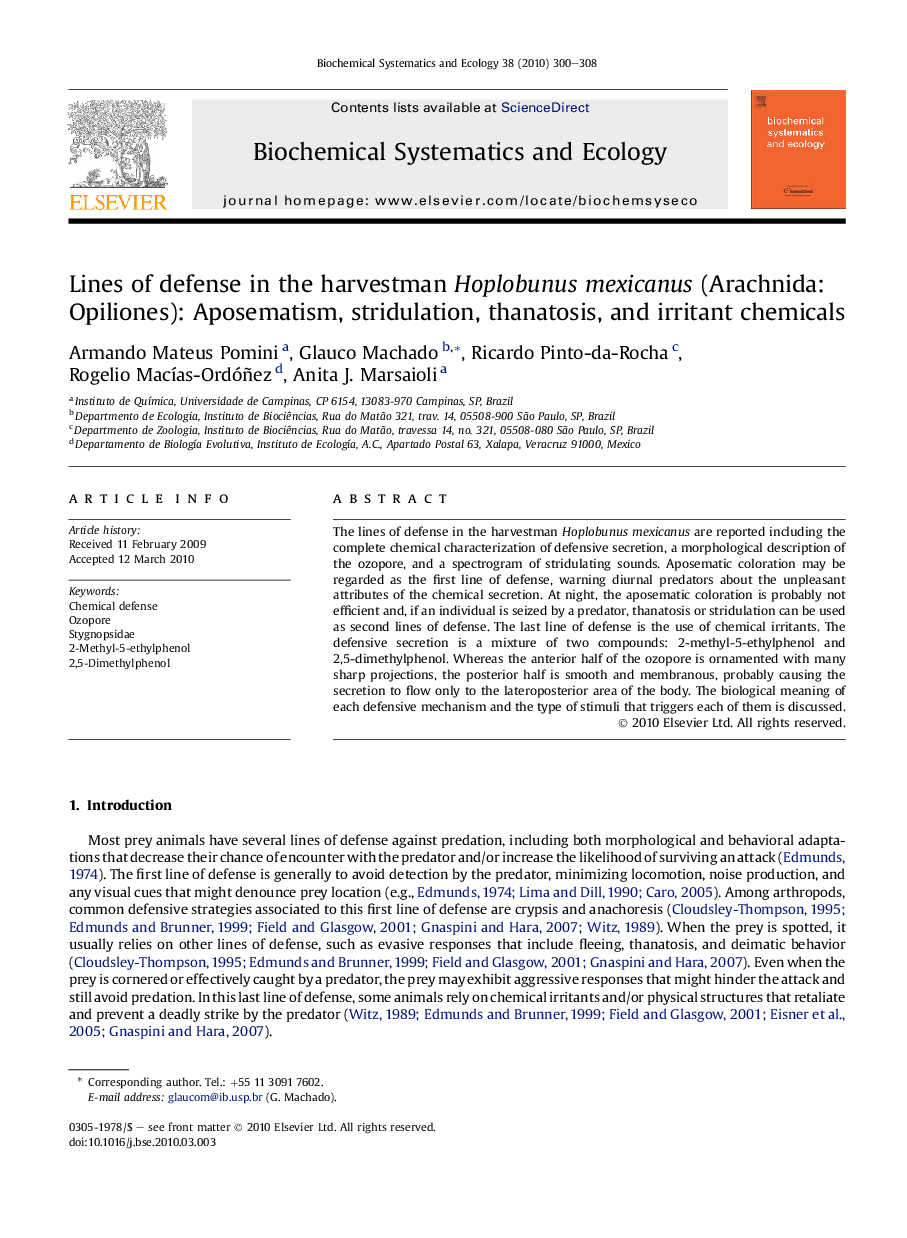| Article ID | Journal | Published Year | Pages | File Type |
|---|---|---|---|---|
| 1352066 | Biochemical Systematics and Ecology | 2010 | 9 Pages |
The lines of defense in the harvestman Hoplobunus mexicanus are reported including the complete chemical characterization of defensive secretion, a morphological description of the ozopore, and a spectrogram of stridulating sounds. Aposematic coloration may be regarded as the first line of defense, warning diurnal predators about the unpleasant attributes of the chemical secretion. At night, the aposematic coloration is probably not efficient and, if an individual is seized by a predator, thanatosis or stridulation can be used as second lines of defense. The last line of defense is the use of chemical irritants. The defensive secretion is a mixture of two compounds: 2-methyl-5-ethylphenol and 2,5-dimethylphenol. Whereas the anterior half of the ozopore is ornamented with many sharp projections, the posterior half is smooth and membranous, probably causing the secretion to flow only to the lateroposterior area of the body. The biological meaning of each defensive mechanism and the type of stimuli that triggers each of them is discussed.
